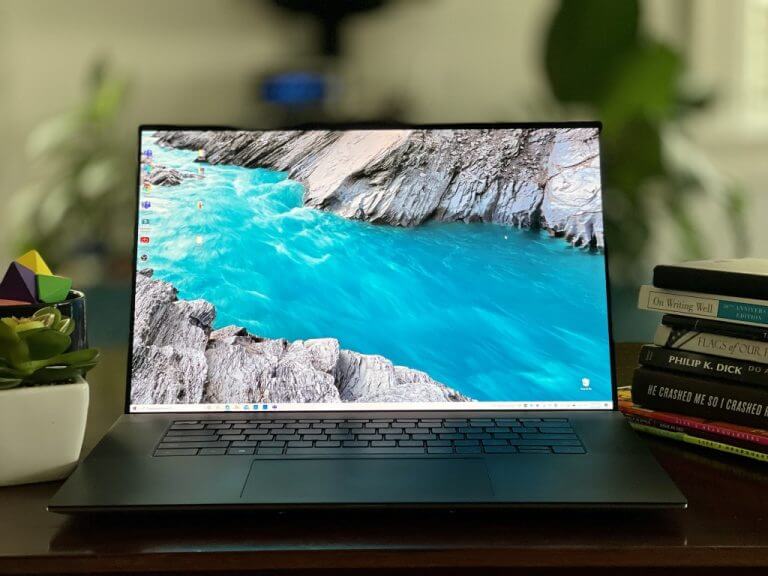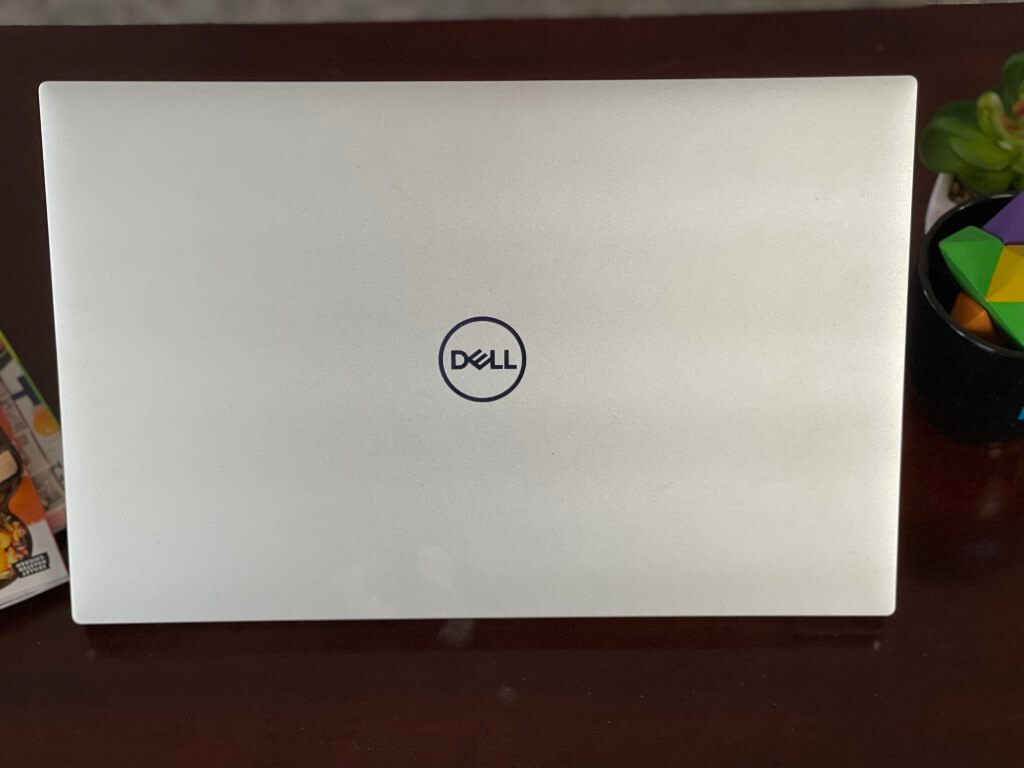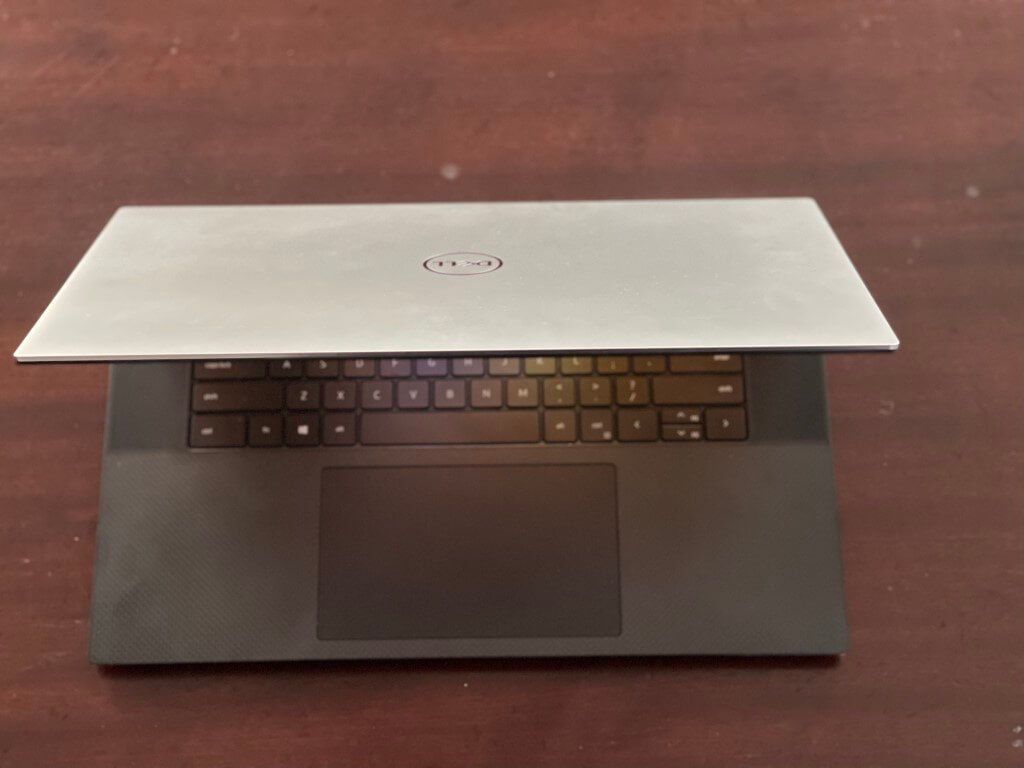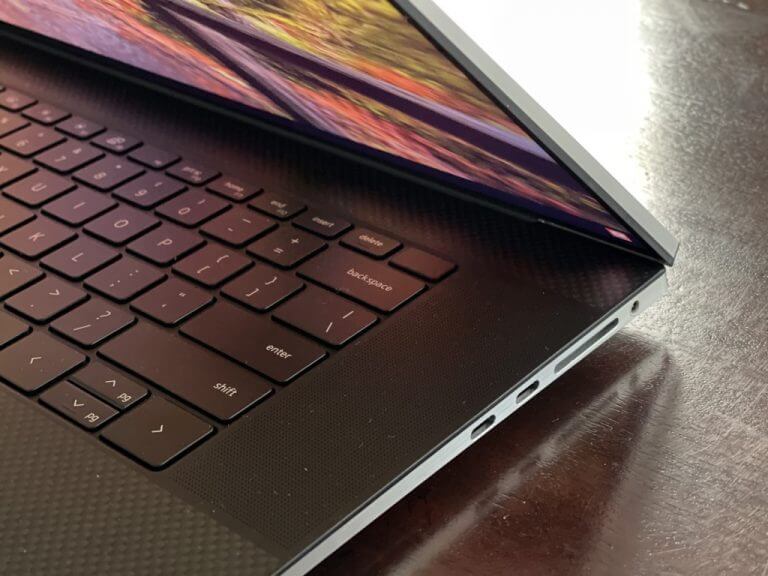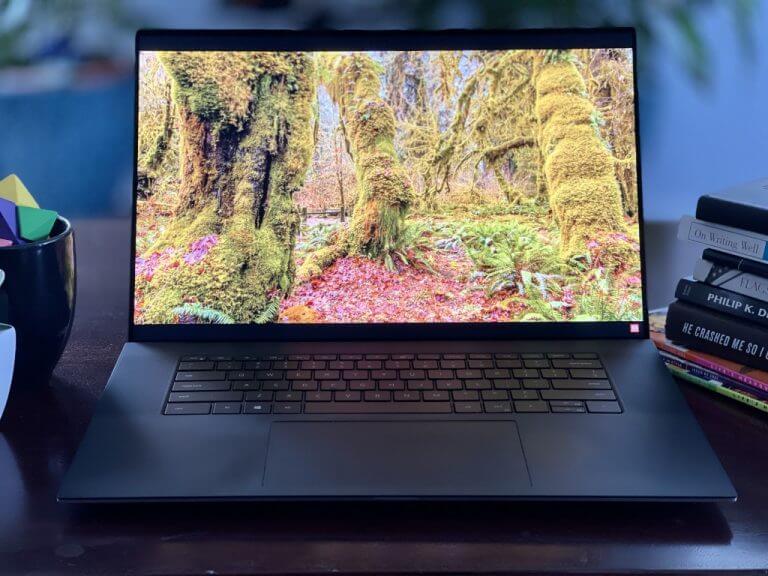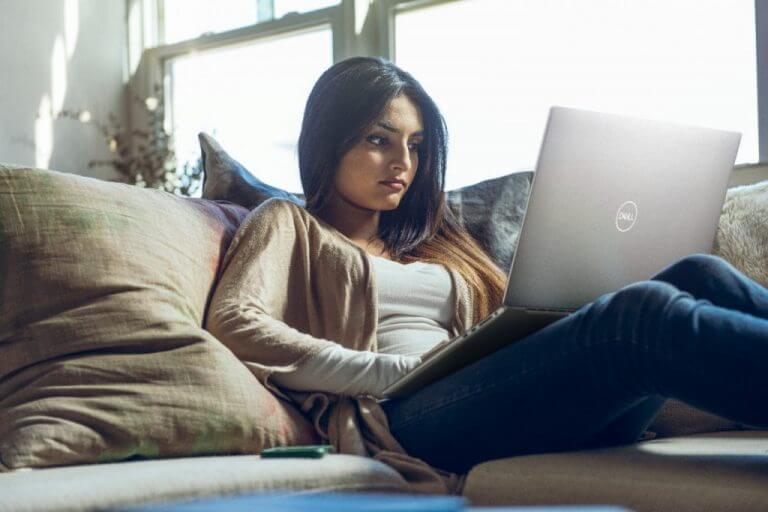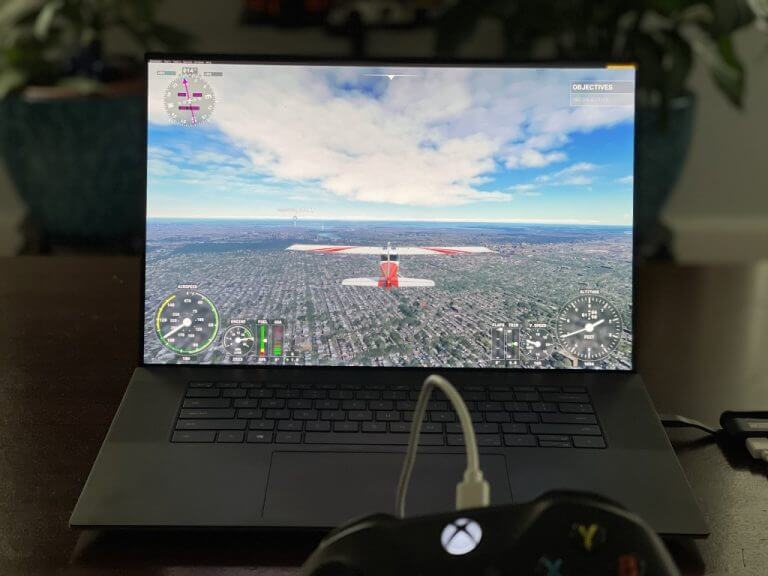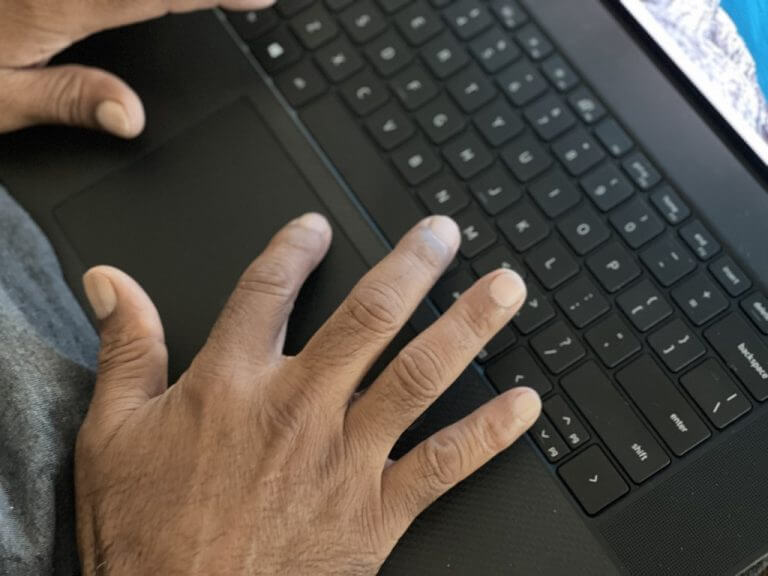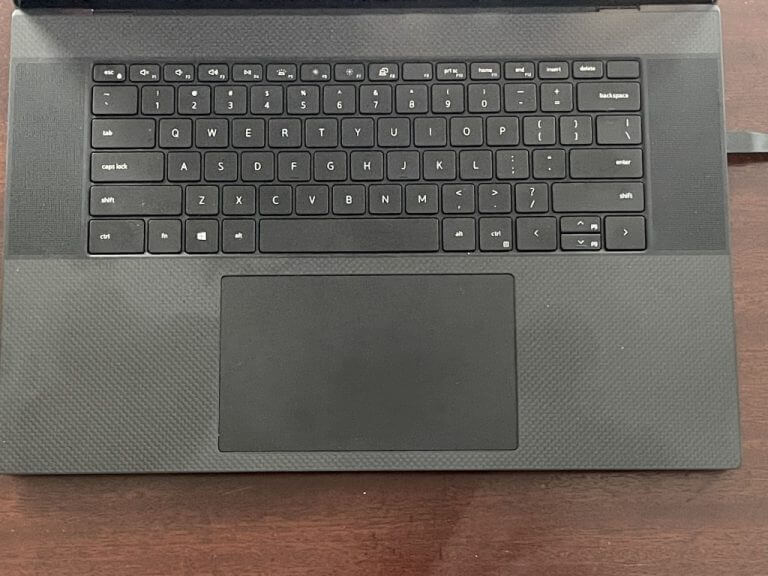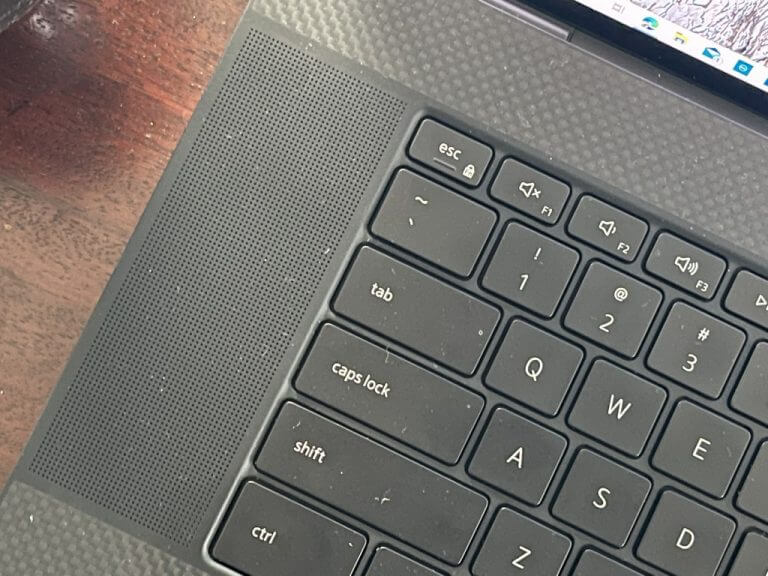These days it seems like content creators like bloggers or video editors might be more interested in Apple’s M1 Macs, but when it comes to folks who must have Windows machines, the XPS lineup is just as solid. I’ve already reviewed the XPS 13, the XPS 15 is also available, but the XPS 17 just sent to me by Dell for review is at the top of the top.
With a massive immersive slim-bezel 17 inch screen, options for Nvidia’s GeForce RTX graphics, and an 8-Core Intel processor, this laptop is quite unique compared to other 17-inch Windows laptops on the market (HP Envy 17, Razer Blade 17, LG Gram 17.) It also packs some serious power and has everything a content creator might want on the Windows side of things.
Specs & Price
The unit sent to us for review comes configured with an 11th Generation Intel Core i7-11800H processor. In these times, I also want to mention that It is a Windows 11 ready laptop. However, our unit came shipped to us with Windows 10 Home. Windows 11 can now be chosen at checkout on Dell.com if you do want it.
Our unit came with an RTX 3060 70W GPU sporting 6 GB of VRAM. As for physical RAM and storage, we were upgraded to 32GB of RAM, and a 1TB M.2 PCIe NVMe SSD. Our 16:10 aspect ratio display was also bumped up to the 4K UHD+ (3840 x 2400) resolution touch panel. Ports are standard on all models, including 4 Thunderbolt 4 ports (2 left, 2 right,) as well as a headphone jack and full-sized SD Card slot. Dell is even kind enough to include a USB-C to HDMI/USB-A dongle in the box. Charging, meanwhile, happens via USB-C with the included 130W adapter.
Altogether, the price of our model adds up to $2,600 on Dell.com. That’s not cheap, but considering all that power, it is totally worth it. Introduction pricing starts at $1,600, but that includes a Core i5 1140H processor, integrated Intel UHD graphics, 8GB of RAM, a 512GB SSD, and a standard 1920 x 1200 FHD+ display. If you want a mid-range model with RTX 3050 graphics, you can step it up to $2,099 for the Core i7 processor, 16GB of RAM, 512GB of storage, and an FHD+ display.
Design, weight, portability
If you’ve ever seen an XPS laptop, then you know the deal. The XPS 17 is one nice-looking machine. On the outside, it has a platinum silver machined aluminum finish and on the inside, it sports a soft-to-the-touch black carbon fiber material. That interior is quite quick to pick up fingerprints, which is slightly annoying.
The side walls are also diamond cut so that they’re shiny and gleaming. There are even upwards firing speaker grills on the inside to the left and right of the keyboard.
Compared to all-aluminum Macbooks, this is something special to look at and touch. Even the Blade 17’s all-aluminum finish looks dull against the XPS.
As for weight, the XPS 17 is a heavy and big laptop. Our touch-screen model weighs in at 5.34 pounds and measures in at 14.74 x 9.76 x 0.77 inches. That’s not too surprising, as 17 inch laptops have always been heavy, but this is a laptop that’s built tough. There’s no bending or flexing on the display, unlike on an LG Gram.
With the dimensions, the XPS is also 15% smaller than most 15-inch laptops on the market. Next to the 14.4 inch Surface Laptop Studio, it isn’t all that much bigger. or heavier. Dell manages to fit a 17-inch screen in a 15-inch chassis.
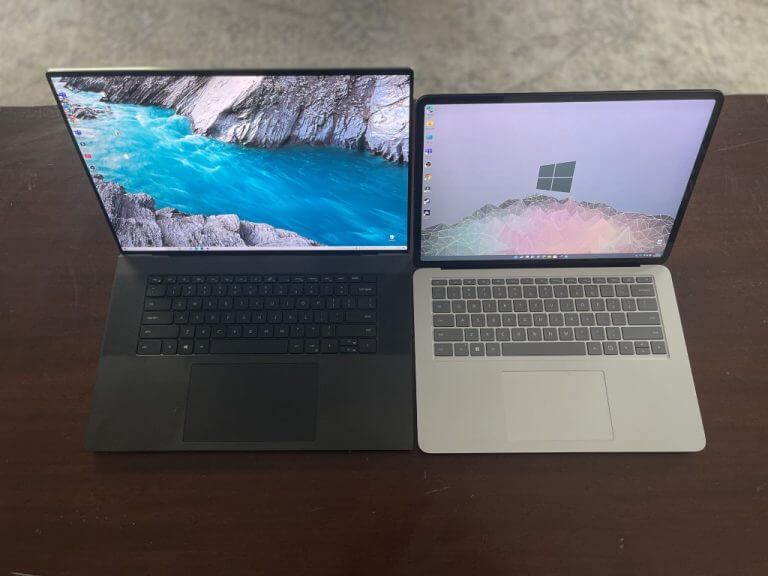
For weight and size comparison, the Razer Blade 17 comes in 6.06 pounds and 15.55 x 10.24 x 0.78 inches. The LG Gram 17 is the lone exception, at it weighs in at just 3 pounds (14.97 x 10.24 x 0.70 inches, but doesn’t have all the beefy internals as the other laptops we’ve mentioned.
The weight is still manageable though, and I carried the XPS 17 around from my home office to the living room and other spots around my home without breaking my back. However, I still think this is more of a studio and “desktop replacement,” laptop, so I don’t see it moving around too much as it will likely stay plugged into the wall most days.
This design is able to bring cooling to a thin form factor. Dell is using dual opposite outlet fans to improve the cooling of the system. Dell says this can improve airflow by 30% and drive air in both directions. There’s even a massive vapor chamber that spans the entire width of the laptop and hidden exhaust vents in the hinge to improve cooling.
Display
I’ve always liked XPS laptops for their displays, and the one on the XPS 17 is no exception. Coming in Dell’s signature 16:10 aspect ratio, the 3840 x 2400 UHD+ display really impresses. When changing the scaling to a lower level in Windows (mine is at 150% but the default is 250%,) this display can let you go detached from monitors.
With Infinity Edge slim bezels, there’s plenty of room for on-screen content. I stacked three Edge browsing sessions side by side by side, and my content wasn’t cut off. I even played Microsoft Flight Simulator on one side of the screen, while keeping Teams open on the other. And, when editing the weekly OnMSFT podcast in Filmora, the 17-inch screen let me see more of my editing timeline, to drag and drop content in with ease.
Sure, it might not be super fast with a 360Hz refresh rate like on the Blade 17, but when it comes to accuracy, the Dell wins out. According to my colorimeter, the XPS netted 100% sRGB, 100% AdobeRGB, and 97% DCI-P3. Even the brightness is high, coming in at over 470 nits, beating the LG Gram’s 382 nits, and the MacBook Pro’s 429 nits.
I watched some 4K nature videos on YouTube to verify those numbers, and couldn’t help but feel as though I was standing in the forest scene that appeared on my screen. This display is super immersive and is super bright. Even though there’s no OLED screen on board, as far as color accuracy goes, this is one of the best laptops out there, especially for creators who need the best colors. With HDR support, you even can use Dell’s Cinema Color and Dell PremierColor software (included) to tweak the look of the screen to content on your screen.
The added touch support also means that you can spare your mouse some clicks, especially when dealing with timelines in video-editing software. It’s something that I appreciated in my time editing the OnMSFT podcast on this machine.
Performance & battery
Thanks to the quad-core Intel Core i7 H-series processor under the hood, as well as Nvidia’s RTX 3060 (70W) GPU (6GB VRAM), paired with 32GB of RAM, the XPS 17 is something that can tackle any load you throw at it. Usually, I start by mentioning the limits of a laptop, but with the XPS 17, there are none. This laptop is desktop replacement material, and it’s built to last quite a while.
Geekbench 5 scoring can attest to that. The XPS 17 nets a total of 8,024 on the multi-core test, and 1,569 on the single-core test. That’s ahead of the listed 1,327 single-core and 3,848 on the LG Gram 17. It’s even ahead of the 1,284 and 6,559 on the Razer Blade 17.
As far as what the GPU is capable of, I would say, pretty much anything a creator might want. I edited a 1 hour and 30-minute long 1080p and 60 FPS podcast on the XPS 17, and the XPS outputted the 17GB file in an impressive 10 minutes. The CUDA cores on the RTX 3060 really help make a difference when it comes to content creation, and I don’t see why this machine can’t handle 4K video editing or anything else that’s heavy and used by other content creators. Outside of the GPU, I even opened about 32 tabs in Edge, and the XPS didn’t freeze or glitch.
Currently editing the #OnPodcast on my latest review unit, the @DellXPS 17. It's quite the monster of machine. Chugging along nicely with this podcast that has over 17GB worth of files and media in it…. My usual HP Envy video editing laptop would have melted down by now.. pic.twitter.com/8P3OZrIwfq
— Arif Bacchus (@abacjourn) September 25, 2021
When it comes to gaming, the XPS 17 impresses even more. In Microsoft Flight Simulator 2020 (one of the most demanding games yet,) the XPS pleased. It punched out 30 frames per second with the screen set at native resolution, and graphics set to high-end. On medium settings, meanwhile, Flight Simulator played at 45 frames at the native resolution. On 1080p settings, things were even better, at a solid 60 frames per second on high-end settings, and 72 frames at medium.
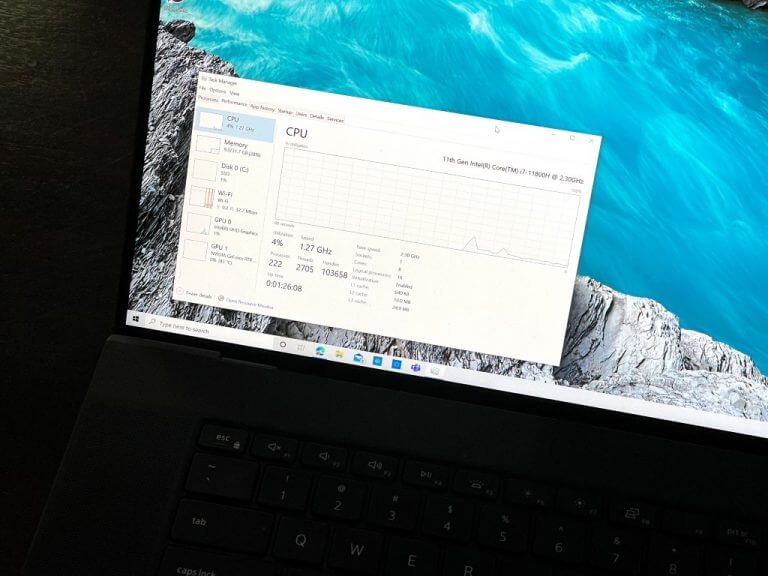
In other games like GTA V, the XPS gets 74 frames per second when set at 1080p, and around 30 frames per second at the native resolution. This isn’t a gaming laptop, but I don’t see why it can’t be. With a 6GB VRAM and a 3060 graphics card, the XPS can play almost any game you throw at it.
As far as battery goes, though, the XPS 17 isn’t exactly the best, even with the slider set to “Best Battery Life,” as suggested by Dell. With H-series processors and hungry RTX graphics inside, the XPS struggled to get through 5 hours in my daily workflow of web browsing, media consumption with the screen set at around 30% brightness. Even in looping a 1080p video, it didn’t fair too well and died out after just 9 hours. The LG Gram 17 will exceed the XPS in battery, as it doesn’t have a power-hungry GPU inside.
I do want to mention Dell’s custom software, too. Using Dell power manager, you can tweak the GPU/CPU for the best performance or battery life. The application allows users to switch between quiet, cool, optimized, and performance modes. So, whether you want maximum performance or a cooler running or quieter experience, you can choose the one that’s right for you.
Keyboard, trackpad, and camera
If you’re familiar with MacBooks, then you might know how terrible the Mac keyboards can be. That’s not a problem here on the XPS 17. The keyboard is towards the middle of the chassis and in the perfect spot for arcing down my fingers for long typing sessions. I will admit that the keyboard travel is a bit shallow, but the keycaps are big to make up for that. I still was able to type at a pace of around 83 words per minute and I loved how responsive the keys felt as I clicked them down. And yes, the keyboard is backlit on two levels, with the backlighting bleeding through evenly on all levels.
I still, though, wish that the XPS 17 had a number pad. I never use it, but there are people who do. Considering the speakers are in the way, though, it’s probably not a possibility with this design.
As far as the trackpad goes, it’s amazing. It’s one of the largest I’ve ever seen on a Windows laptop and the smooth glass service is a pleasure to glide my fingers on. Compared to the size of the spacebar, it’s around 2.5 times bigger. My palms didn’t get in the way of the pad, either, and when it did, the XPS rejected my palm movements. The trackpad even makes a slight clicking noise when you tap it, and it’s not too loud.
One thing that I wish was improved was the webcam. Yes, it is Windows Hello, but it’s 720p. I tried using the webcam for my podcast, but the image it produced was absolutely terrible and grainy. For a $2,000 machine, that was a huge letdown. The audio, though, was pretty good thanks to the dual microphones at the top of the display. Dell says that Waves MaxxVoice – a suite of studio-quality voice optimizations – is engineered to match the quality of face-to-face communication for clear and uninterrupted voice conferencing.
Audio
I want to end this review by touching on the audio. It’s rare to have upwards firing speakers on a Windows laptop, and that’s what this XPS has. There are two primary up-firing speakers, and two traditional tweets in the base. This is a quad-speaker design, and it makes audio really immersive. I listened to Daxten’s High Hopes, and I could feel the trumps of the bass escaping the speakers. People have claimed that the 16 inch MacBook Pro has the best speakers, but the XPS is even better — especially thanks to the Waves MaxxAudioPro software, which lets you use an equalizer to tweak the speakers to your own liking.
The ultimate laptop for creators
Though it’s an expensive venture that adds up to $2,600 on Dell.com, this XPS 17 model that we’re reviewing is one of the best laptops money can buy. Thanks to the immersive 17-inch screen, Intel’s H-series processor, as well as the Nvidia GPU, there isn’t anything this laptop can’t handle. Other than the Razer Blade 17, it’s one of the most powerful options for content creators, and can go above and beyond standards.

